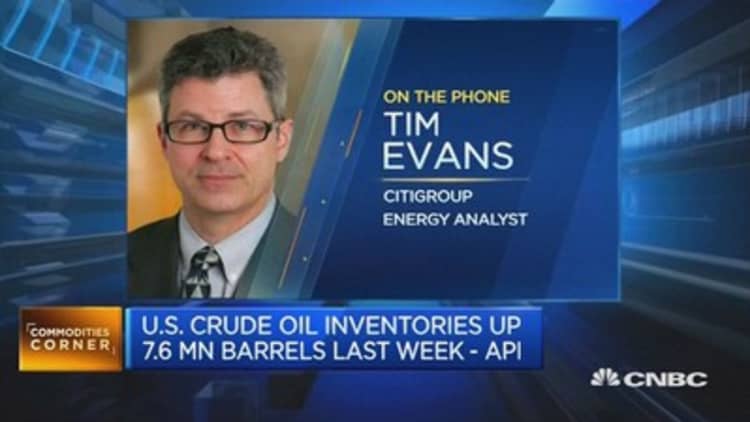
Recent volatility in the price of oil has led some analysts to re-examine the history of price swings for the commodity.
Wednesday's price, back to the recent lows branded "close to unsustainable" by HSBC strategists, came after an oil price spike on Monday that was bigger than any since the Gulf War broke out.
Oil is causing a headache for investors, with the price now down around 60 percent since 2014's peak around $95 a barrel, and similar to the price fall seen during the 2008 global financial crisis. Brent crude was trading at around $48.90 on Wednesday, while U.S. crude oil prices were down more than 2 percent at around $44.40 a barrel.
One well-known result of oil price falls is the effect on the consumer. This time round, the economic result is a $2.2 trillion annualized wealth transfer from exporter countries to consumers, according to HSBC.
So can the cost of one of the world's most important commodities continue to fall?
HSBC strategists think not – they expect a move higher to $55 a barrel for Brent crude in 2015, followed by a rise to $60 a barrel in 2016, according to a research note published on Tuesday.
The investment bank also made a relatively contrarian call of going overweight on energy stocks.
"It is the most unloved sector globally, relative valuations are at 20-year lows, earnings expectations have halved, and HSBC sees a gradual move higher in oil prices…as non-OPEC supply falls," the strategists argued, referring to oil group the Organization of the Petroleum Exporting Countries.
They also pointed out that energy stocks' underperformance has been worse than in previous oil price shocks. The sector is currently the most unloved globally, with more investors underweight it than any other.
There are also some encouraging signs for oil price optimists in the emerging signs that non-OPEC producers are making significant cuts to production as the cost of producing U.S. shale, for example, becomes untenable given oil price falls. The data from the U.S.'s Energy Information Administration Monday, coupled with new potential for the oil cartel OPEC to change its production quotas, helped here too.
Still, so far, the supply and demand dynamics have not changed much: essentially, production levels have not fallen as much as expected despite worse-than-expected economic growth globally. The most recent manifestation of this is the panic around China's economic growth slowing.
Turmoil in the Middle East and Russia, which has historically driven the oil price up, continues with little apparent impact on the market.
This all gives plenty of material to those pessimistic about the oil price – such as Citi's commodities team, who forecast Tuesday that Brent and WTI will reach new lows for the year.
- By CNBC's Catherine Boyle






